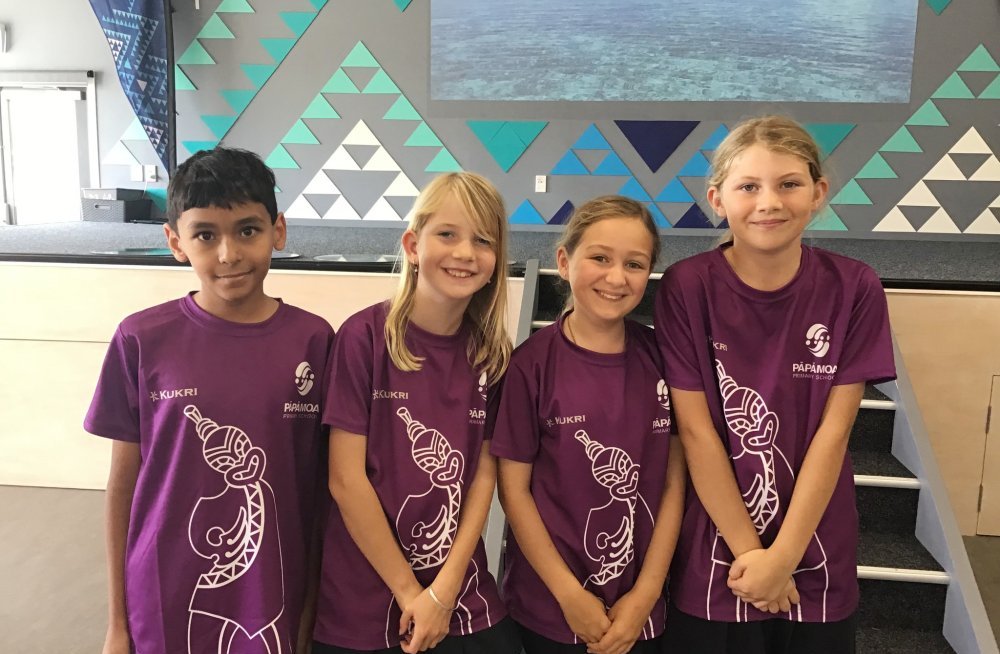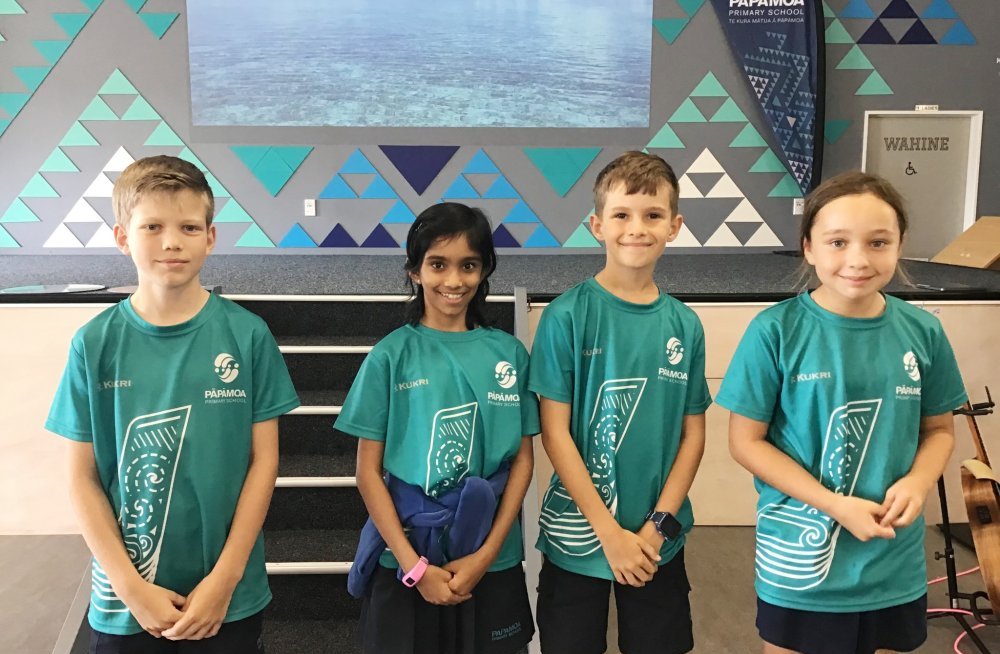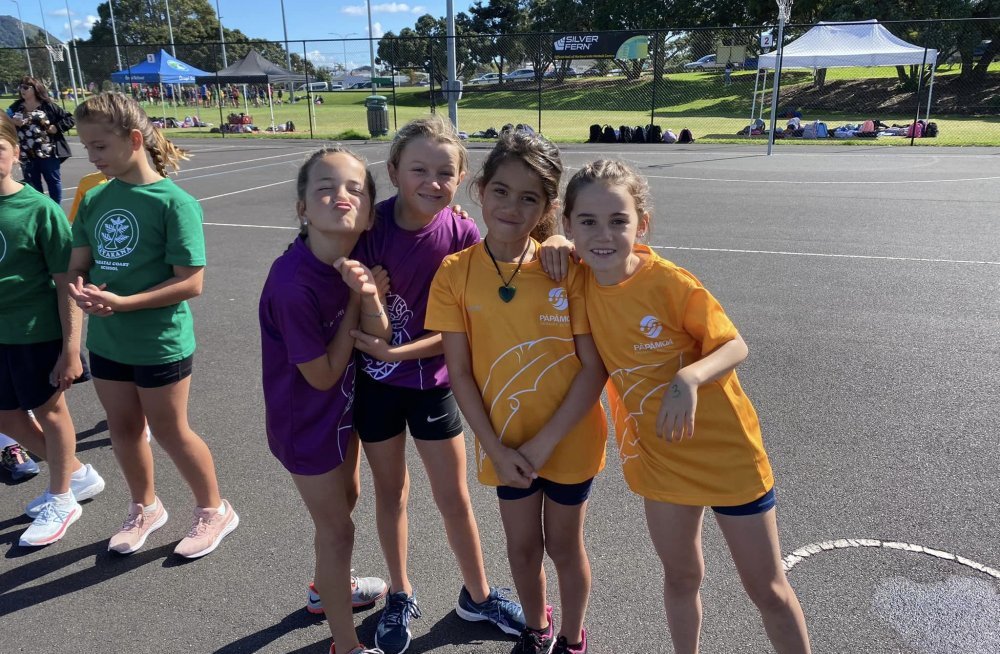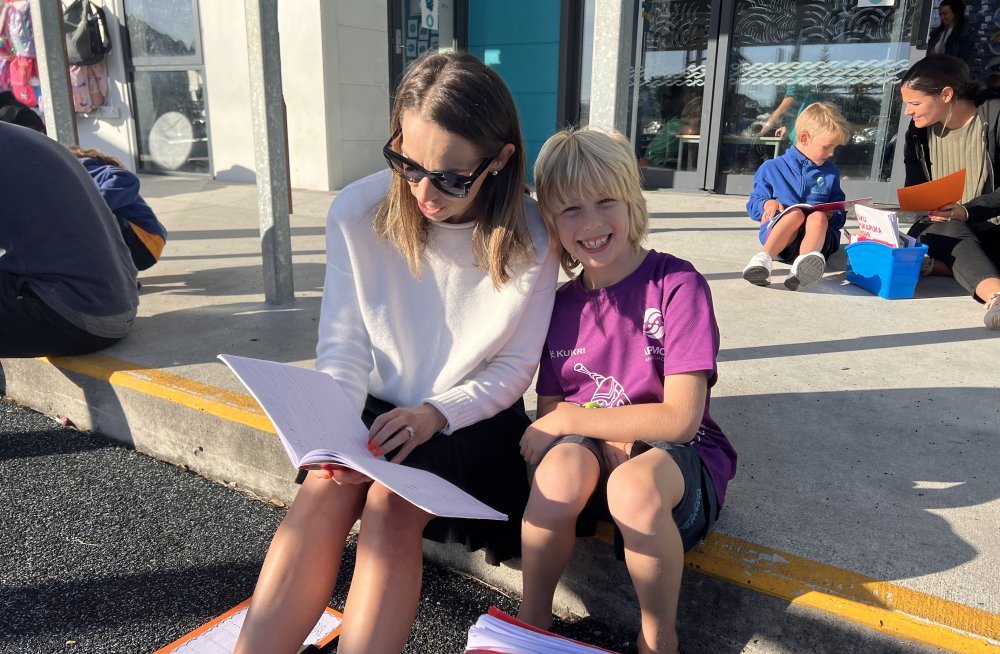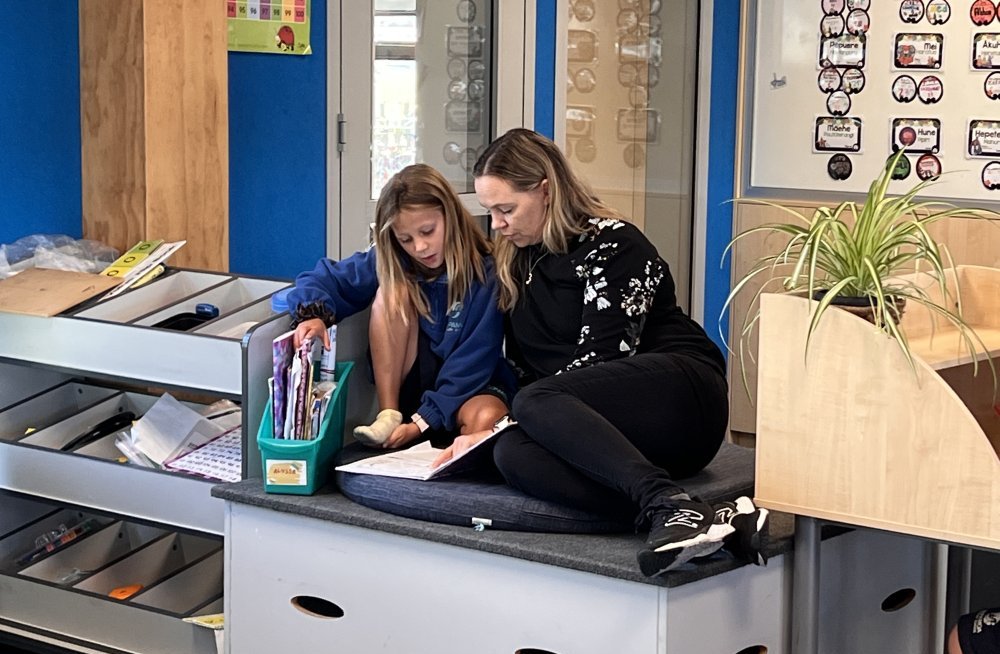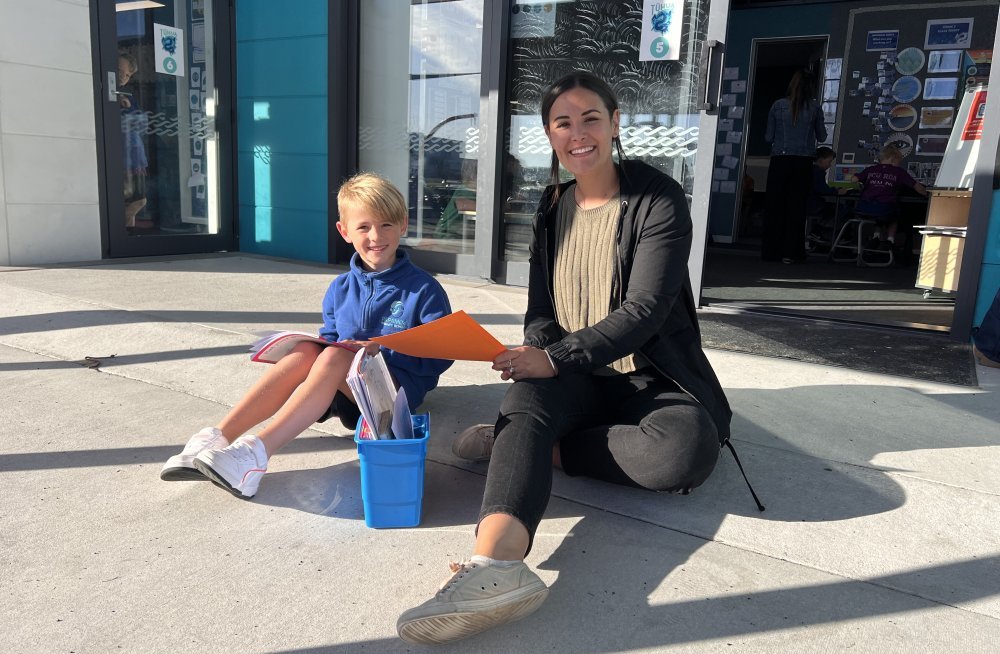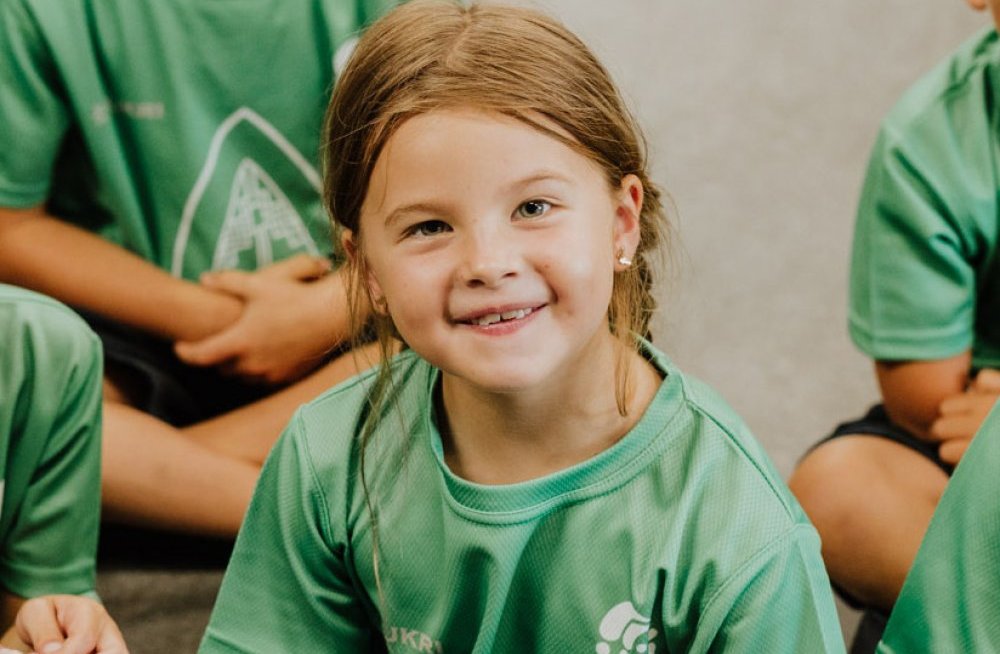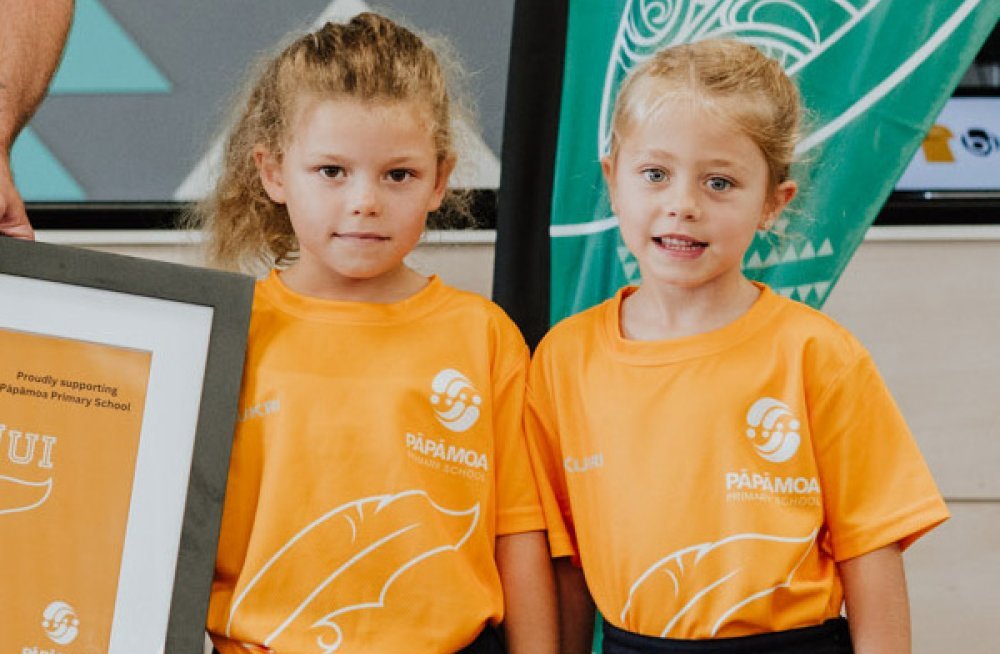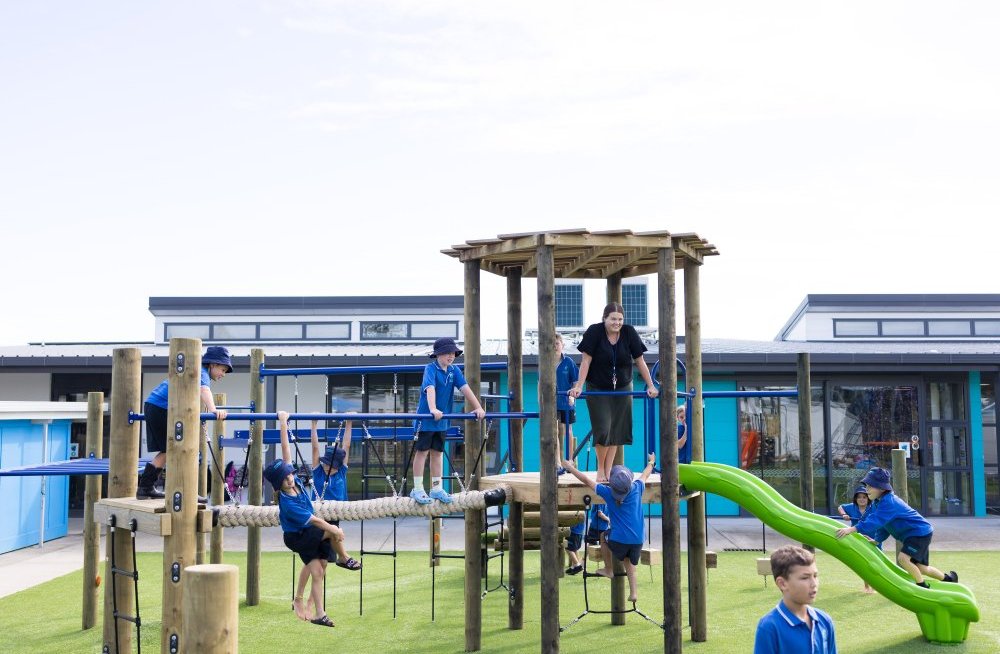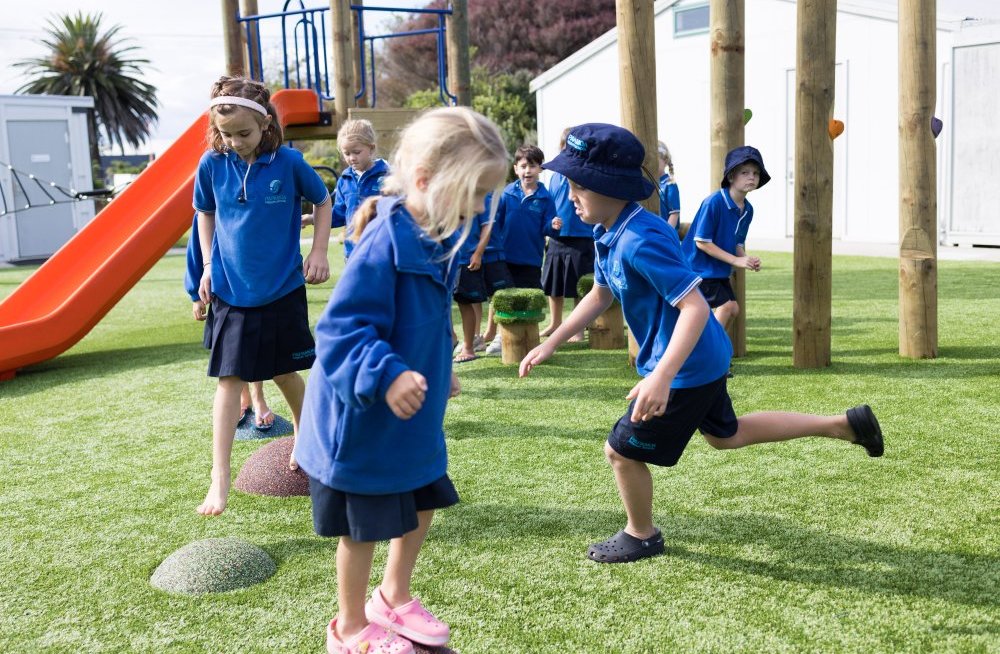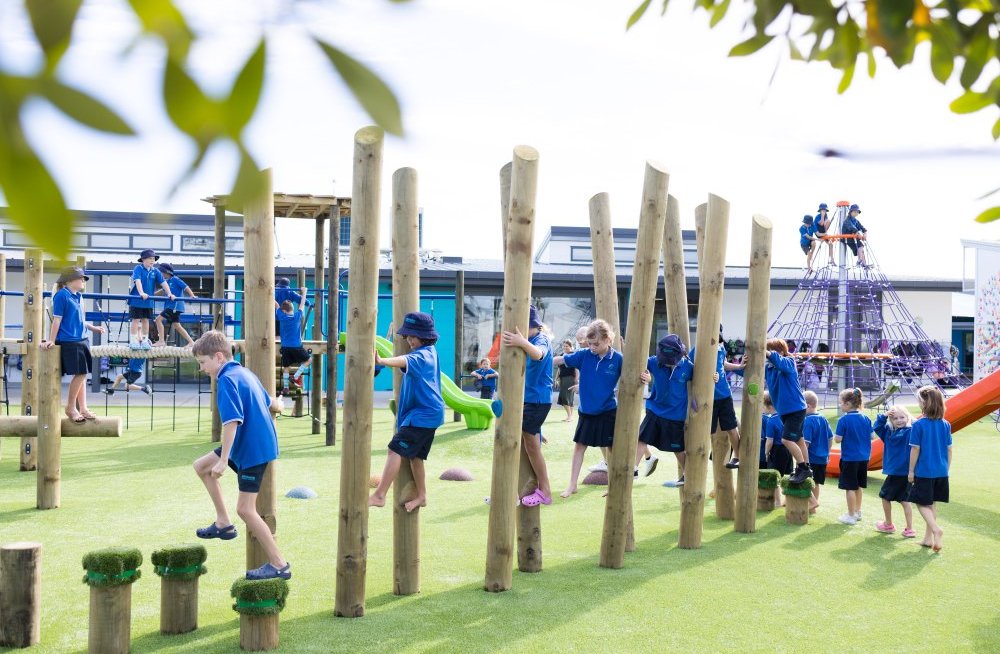School Karakia
Karakia Timatanga
Warea ki uta, waerea ki tai
Ka hura a tāngata ki uta, ka hura a tāngata ki tai
He wai kōrari au nō te rae o Pāpāmoa
Heke iho ki a hinemoana
Ki atu, kai mai i taku pātaka kai
Tipu ake ai taku pā harakeke
Kia whakatangata ki uta, kia whakatangata ki tai
Ko au ko Pāpāmoa, ko Pāpāmoa ko au
Haumi e, hui e, tāiki e!
Translation
Cleanse the people of the land, Cleanse the people of the sea
Be mindful of those on land, be mindful of those at sea (Our surroundings)
I am the nectar (Students) of the korari blossom (teacher) from Te Rae o Pāpāmoa (teachers attracting the students to learn)
That flows all the way down to Hinemoana (The Sea Maiden) (Your Connection to the environment)
Feast there, feast here from our food basket (Education, eating knowledge) In order for our family to grow
For we are engrained on land and engrained at sea (knowing who you are)
I am Pāpāmoa, and Pāpāmoa is me (Being proud of your school)
Lets draw together and stay united as one (Unity)
Honouring Te Tiriti
Te Tiriti o Waitangi - in The New Zealand Curriculum provides a foundation for schools' decision-making. The principles of Te Tiriti o Waitangi calls for schools and teachers to deliver a curriculum that:
- acknowledges the Treaty of Waitangi principles
- acknowledges our nation’s bicultural foundations
- enables students to acquire knowledge of te reo Māori and tikanga Māori
Our Commitment
At Pāpāmoa Primary School, we have committed to Te Tiriti's principles in the following ways.
Partnership - Pātuitanga
We are committed to partnering with our local Mana Whenua Ngā PÅtiki and acknowledging a Māori worldview.
Protection - Te Whakamarumarutanga
We are committed to protecting Te Reo Māori language and tikanga Māori.
Participation -Te Whaiwāhitanga
We are committed to ensuring we participate in education practices that have a Māori worldview.
Our Vision
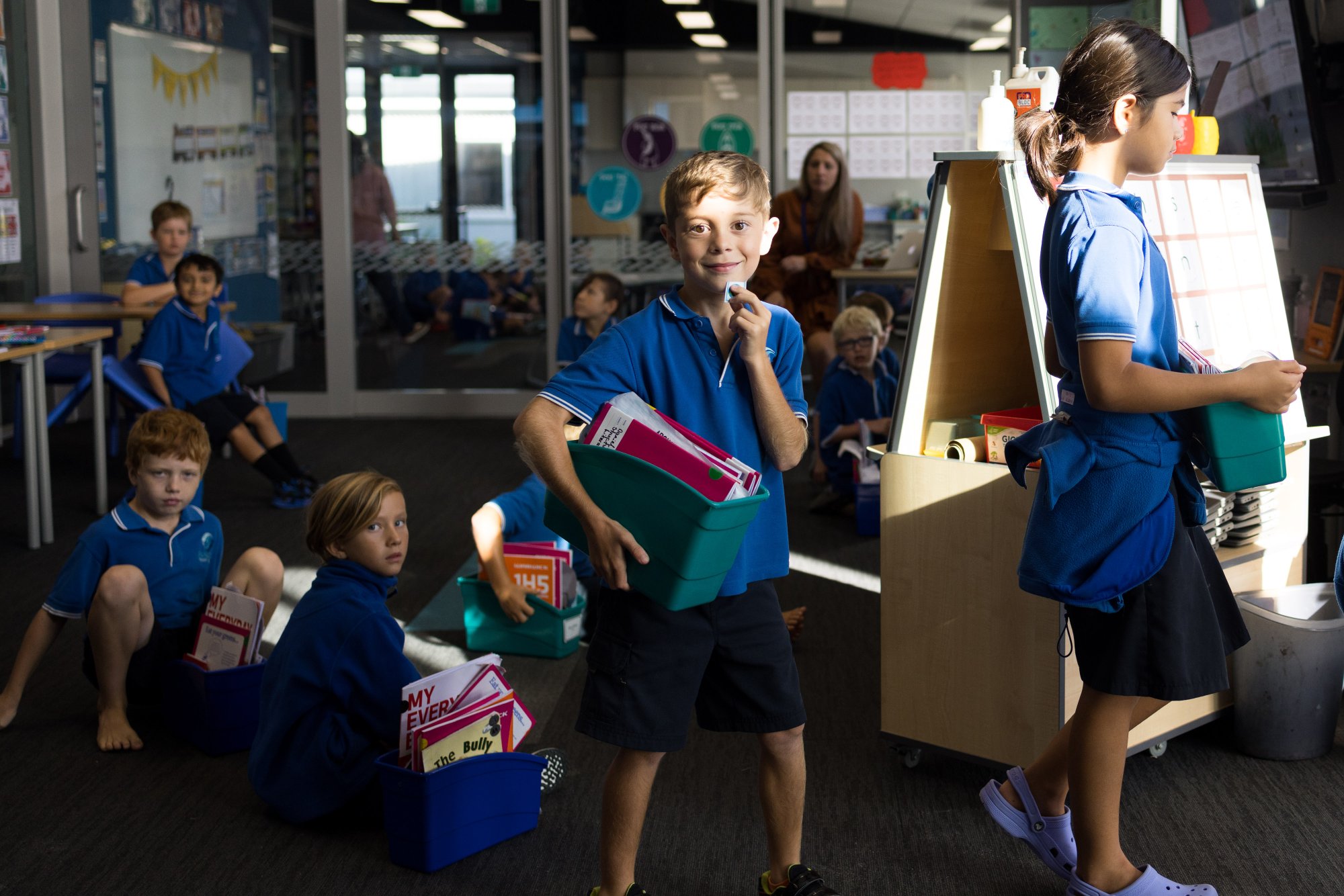
Growing Successful Learners
"Growing Successful Learners," reflects our commitment to helping students develop the knowledge, skills, and attitudes they need to succeed in school and beyond. Learning is not only about acquiring information but also about developing the ability to apply that learning in practical ways.
We have an integrated approach to teaching and learning which means that we strive to make connections across all subjects and promote interdisciplinary learning. This approach can help students see how different subjects are related and develop a more comprehensive understanding of the world.
Our school takes an holistic view of all ākonga (learners), which recognises that students are all individuals with diverse backgrounds, experiences, and needs. By taking a whole-person approach, we aim to support students' academic, social, emotional, and physical development, which will help them thrive in all areas of their lives.
Finally, our school recognizes that learning doesn't just happen within the classroom but also within the wider community. Students can learn from a variety of sources, including parents, community members, and local organizations. By engaging with the broader community, you provide students with opportunities to connect their learning to real-world contexts and develop valuable life skills.
Our Values
Values are deeply held beliefs about what is important or desirable. Our School values are encouraged, modelled, and explored through our everyday interactions and learning experiences.
At Pāpāmoa Primary School our values are:
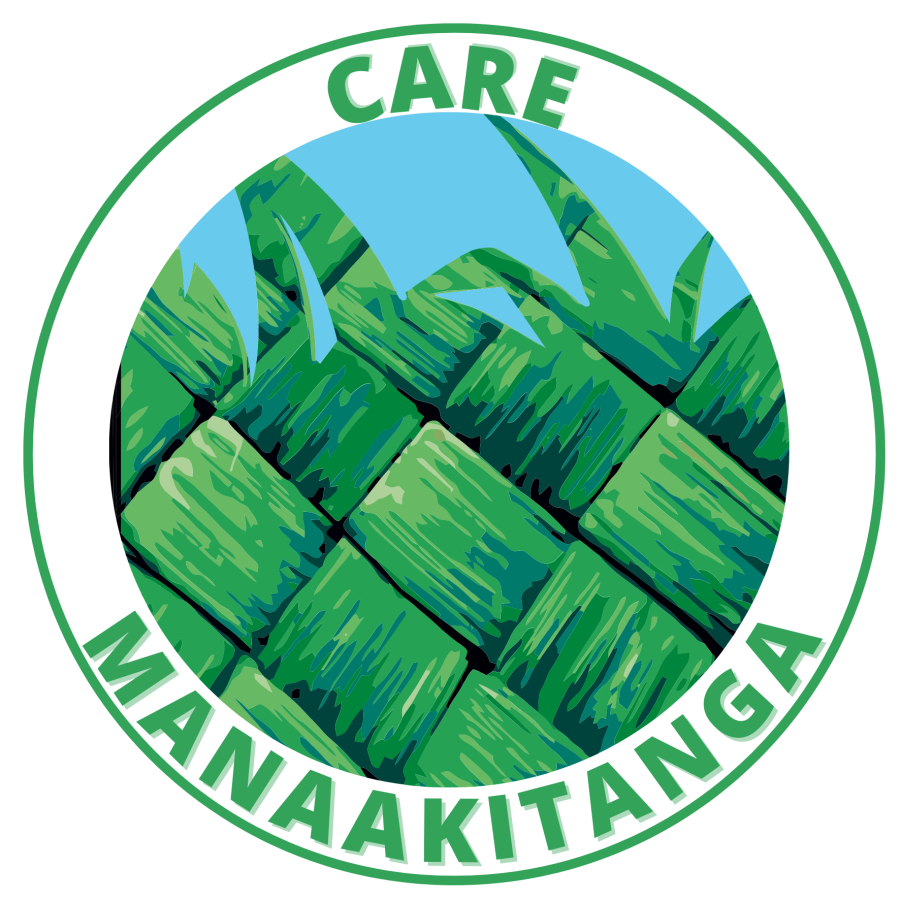
Care
Manaakitanga
- Gratitude
- Empathy
- Respect
- Sustainable
We show consideration for others and our environment.
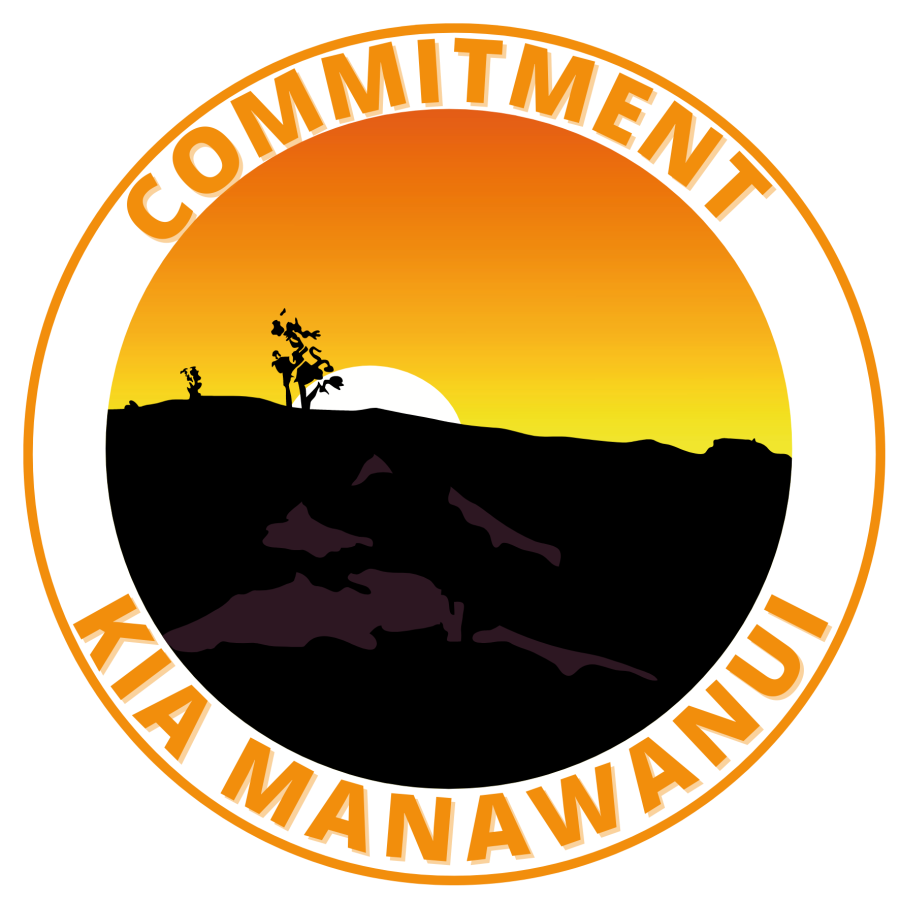
Commitment
Kia Manawanui
- Responsible
- Reliable
- Problem Solver
- Perseverance
We keep trying and are willing to adapt to change.
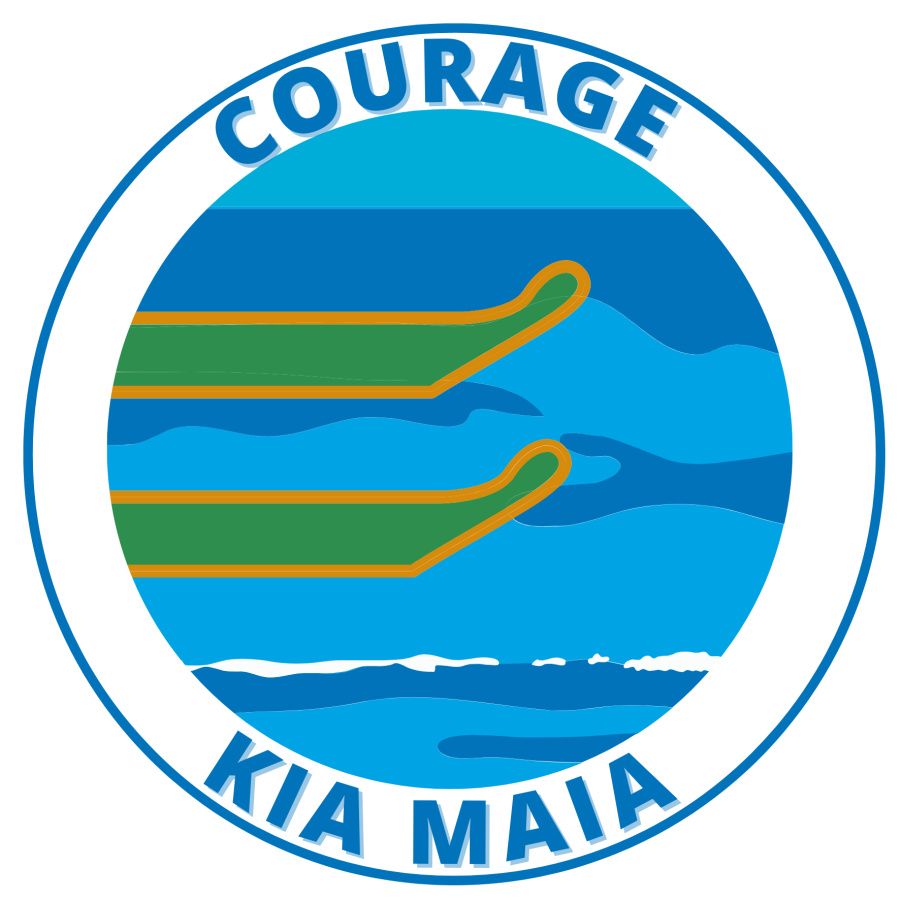
Courage
Kia Maia
- Confident
- Resilient
- Risk-taker
- Ask For Help
We face challenges and support each other.
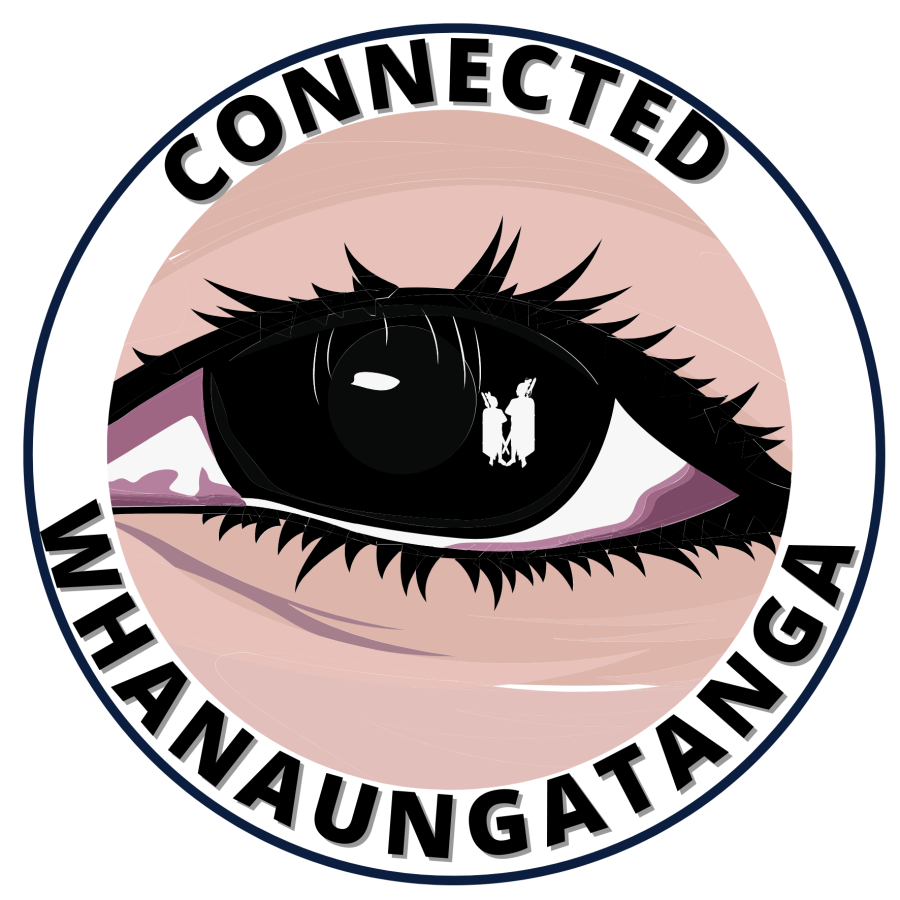
Connected
Whanaungatanga
- Respectful relationships
- Teamwork
- Whenua
- Communicate
We acknowledge our past, appreciate the present and look forward to the future.
Reporting to Parents
Reporting to parents is an essential part of the New Zealand school system. At various points throughout the year, Pāpāmoa Primary will provide progress reports on your child's learning and progress. These reports typically include information on academic progress, social and emotional development, and areas for improvement.
As parents, you will receive written reports and opportunities to meet with teachers in person to discuss your child's progress. Teachers will work with parents to identify strengths and weaknesses and set goals for improvement.
In addition to formal reporting, you can also expect regular communication from the school, including newsletters and updates on upcoming events and activities and Seesaw posts about classroom learning.
Developing a partnership between parents and teachers is at the heart of our reporting, and then working together to support your child's learning journey. By keeping you informed and involved as parents, we can help ensure the best possible outcomes for your child.
Our Curriculum
At Pāpāmoa Primary School, we believe that a localised curriculum is essential for building strong foundations in literacy and numeracy. These foundational skills are then applied across all areas of the curriculum in an integrated approach, allowing students to make meaningful connections and develop a deeper understanding of their learning.
We place a high value on authentic learning experiences, which are achieved through real-life experiences, education outside the classroom, and engagement with our community. Our students learn in a context that is relevant to them, and we encourage them to make connections between what they learn in the classroom and their lives outside of school.
At Pāpāmoa Primary School, we understand the importance of collaboration and independence in education. That's why we prioritize teaching these skills explicitly and modeling them in our learning structures. Our approach fosters a balance between working together and taking responsibility for one's learning.
Digital learning is an essential component of all lessons at Pāpāmoa Primary School. We use technology as a tool to engage students and encourage creativity and learner agency. Our students learn how to use digital tools to support their learning and explore new opportunities for expression and communication.
Inquiry learning is a key part of integrating all areas of our curriculum to enhance authentic experiences and develop lifelong learning. We encourage our students to ask questions, investigate topics of interest, and apply their knowledge in real-world contexts.
At Pāpāmoa Primary School, we believe that reflecting through a Te Ao Māori lens is essential for developing a deeper understanding of our community and culture. This lens helps us to appreciate the unique perspectives and values of Māori culture and to grow our engagement with our Pāpāmoa community.
Overall, we take a holistic approach to education that recognises the importance of academic, social, and cultural learning. We strive to create an inclusive and supportive environment where all students can reach their full potential.
Literacy
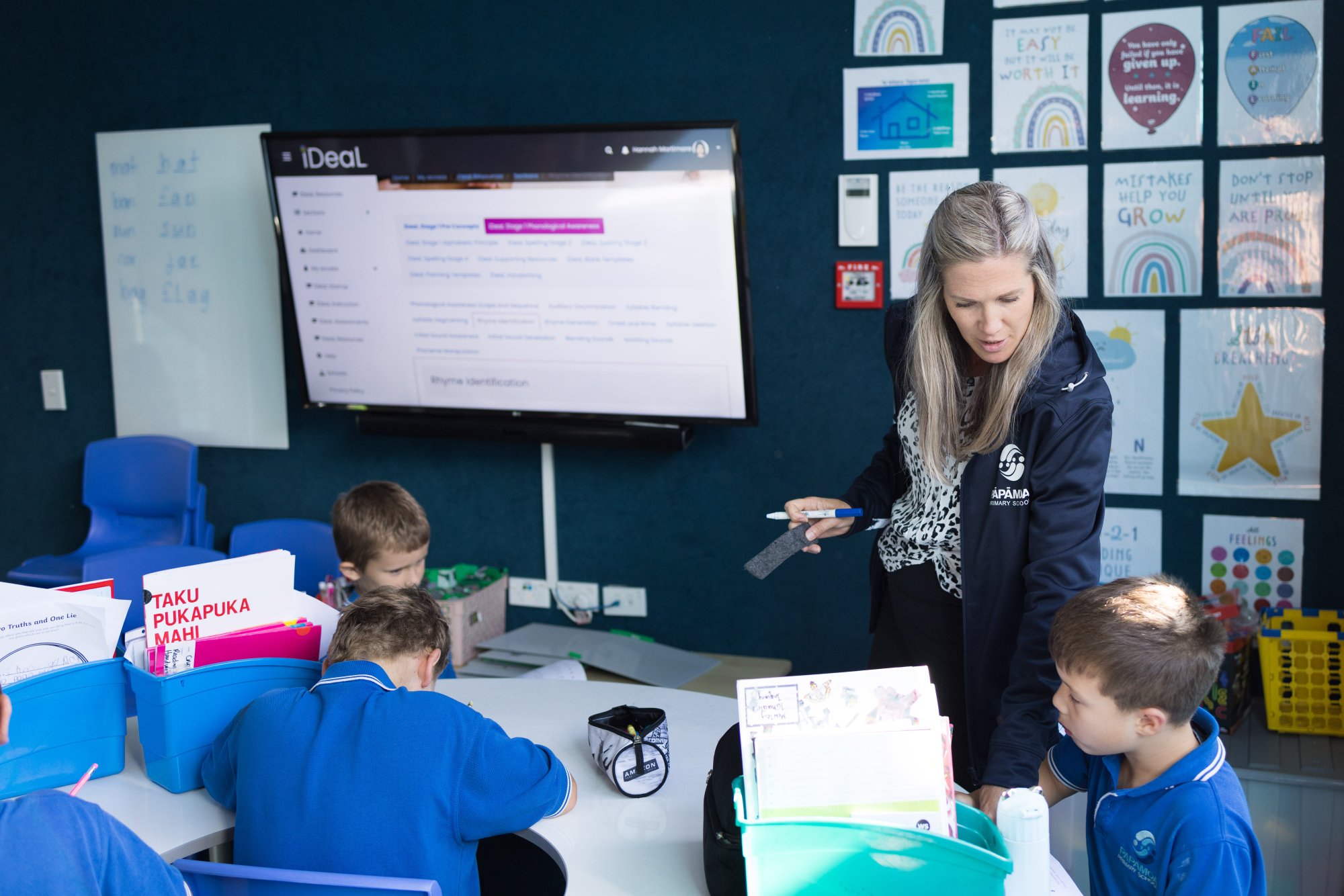
At Pāpāmoa Primary School our practice and pedagogy reflects Ministry of Education intent as described in the Literacy Learning Progressions, as well as current research and evidence based recommendations.
We believe the quality of the teacher is the single greatest in-school influence on student achievement.
Our reading and writing guidelines reflect direction, knowledge, expertise and practice principles for teachers and students at our school. This ensures we have a consistent and evidence-based approach to the teaching of reading and writing.
We, therefore, use the Structured Literacy approach to reading and writing with Writer's Toolbox and the IDeal Platform as our core resources.
Numeracy
The New Zealand Curriculum sets out what students should learn and be able to do in Mathematics at each stage of their schooling. At Pāpāmoa Primary School, we follow these guidelines to ensure that our students develop the essential mathematical skills and knowledge they need to succeed in their future studies and in life.
In addition to learning fundamental mathematical concepts such as numeracy, measurement, geometry, and statistics, our approach emphasizes the development of key competencies. These competencies include problem solving, reasoning, communicating, and using mathematical tools and technology.
Problem solving involves using mathematical knowledge and skills to solve real-world problems, while reasoning requires students to explain their mathematical thinking and justify their solutions. Communicating involves being able to explain mathematical concepts and solutions to others, while using mathematical tools and technology helps students to work more efficiently and effectively.
Encouraging a positive attitude to Maths is also a key part of our approach. We believe that all students can develop the skills and confidence they need to succeed in Maths, and we strive to create a supportive learning environment that encourages students to take risks and learn from their mistakes.
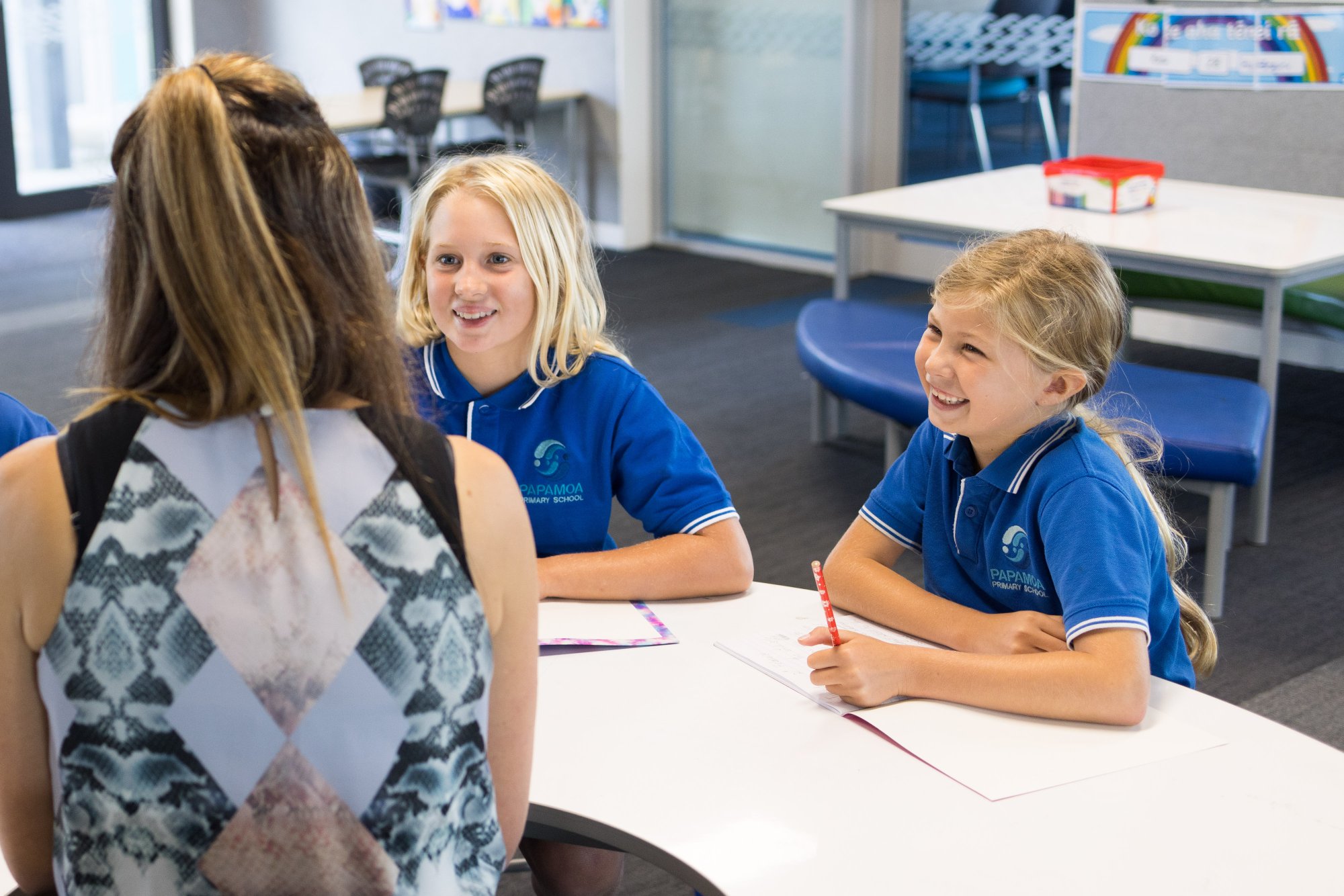
Inclusive Education
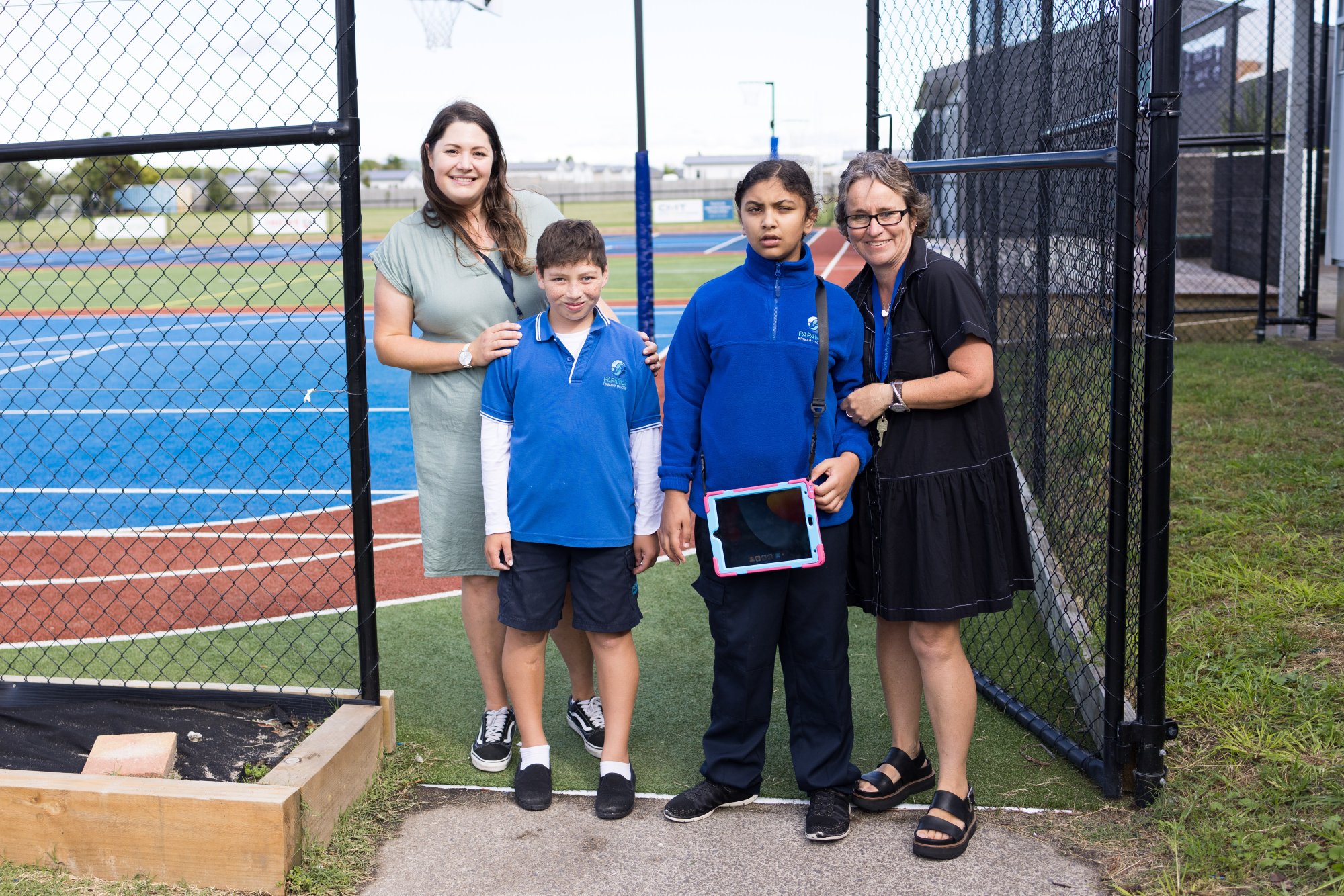
We are proud advocates of inclusive education, committed to creating a safe and supportive learning environment for all students. We recognise and embrace the diverse abilities, backgrounds, cultures, and identities of our students, and we believe that every child deserves an equal opportunity to succeed. Through personalised support, differentiated instruction, and a culture of respect and acceptance, we strive to ensure that every student feels valued, included, and empowered to reach their full potential.
Te Manawanui - Reo Rua
Pāpāmoa Primary School is proud to offer three Reo Rua / bilingual classrooms, providing a unique and enriching learning experience for our students. Reo Rua is a program that encourages bilingualism and biculturalism by incorporating the Māori language and culture alongside English in the classroom.
In our Reo Rua classrooms, students have the opportunity to learn and use Te Reo Māori as an integral part of their daily learning experience. Through this program, students develop a deeper understanding and appreciation for Māori culture, history, and values, which is an essential part of New Zealand's identity and heritage.
Our bilingual classrooms are staffed with qualified and experienced teachers who have fluency with Te Reo Māori, providing a supportive and engaging learning environment for all students. They use a range of teaching strategies and resources to cater for different learning styles and abilities, ensuring that all students can participate and achieve success in their learning.
We believe that Reo Rua is an essential part of providing a well-rounded education for our students, and we are committed to continuing to provide this program as part of our school's curriculum. Our bilingual classrooms offer a unique opportunity for our students to develop fluency in both languages and build a deeper connection to New Zealand's culture and heritage.
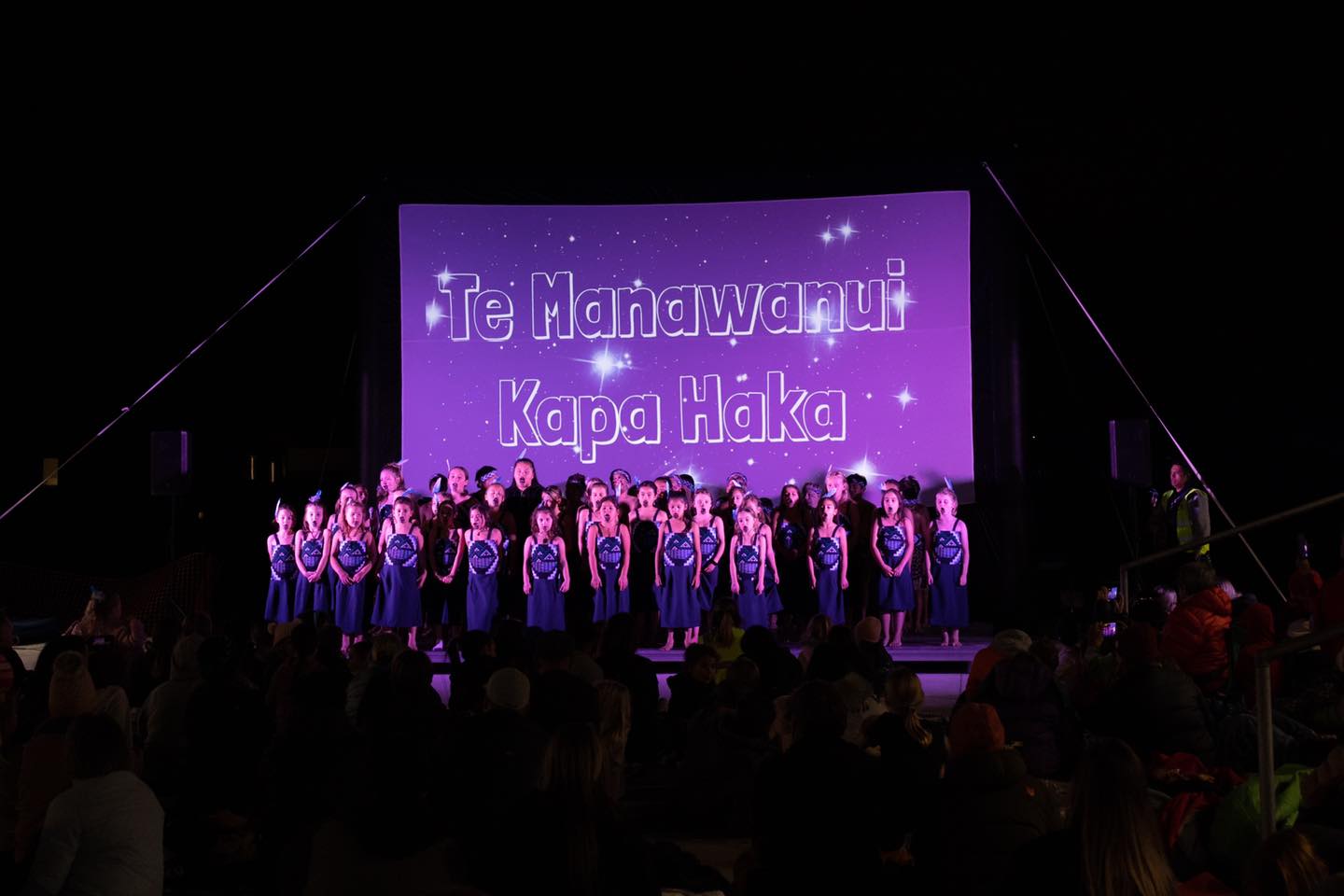
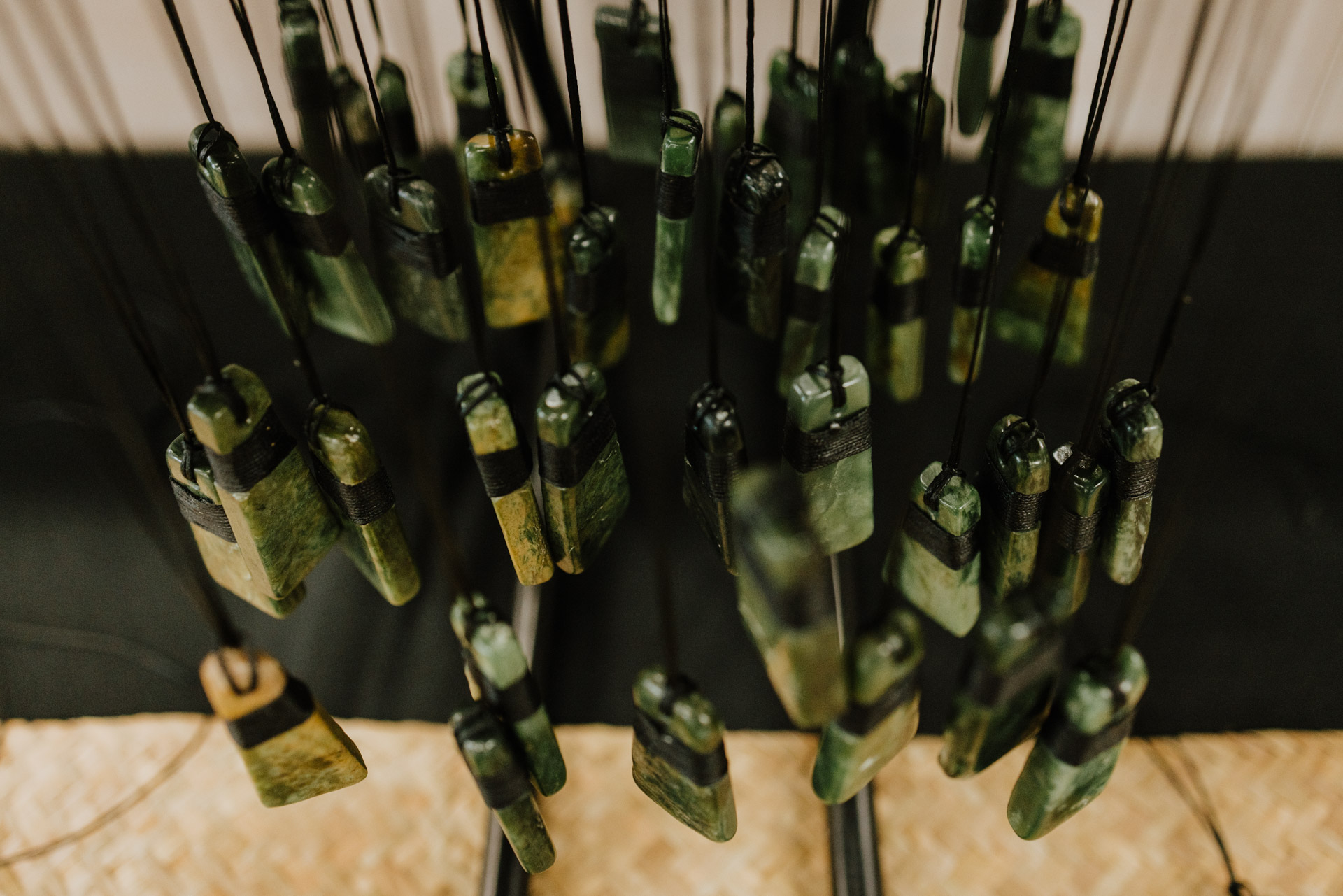
Our Pou

What does Pou stand for?
1. (noun) support, supporter, stalwart, mentor, a symbol of support, metaphoric post - someone, a group, TRIBE, gathering or something that strongly supports a cause or is a territorial symbol, such as a mountain or landmark, representing that support.
At Pāpāmoa Primary our Pou is our Tribe!
About Our Pou
School houses - or as we will call them - Pou - have been long associated with schools but have been made more famous in the acclaimed novels of Harry Potter.
"In the stories of Harry Potter, the four Houses are called Gryffindor, Hufflepuff, Ravenclaw, and Slytherin. Each House has its own noble history and each has produced outstanding witches and wizards. While you are at Hogwarts (the school), your triumphs will earn your House points, while any rule-breaking will lose House points. At the end of the year, the House with the most points is awarded the House Cup, a great honour.”
School Houses have been part of Pāpāmoa Primary in the past but have not been a prominent part of the school's values, beliefs and traditions for some time. Our Pou were relaunched in February 2023.
Pou at Pāpāmoa Primary are groups for our school tamariki that sit outside their immediate year group. Our Pou has children of all ages from across the school and includes tamariki immediate whānau too.
Every child within our school and any new child enrolling in our school will be grouped into one of our 4 Pou .
Throughout the school year, tamariki have the opportunity to participate in a wide range of activities to earn and win Pou points with the overall aim for your whare to win the Pau Tonga (Trophy), which will be presented at the end of each school year.
Commitment, Care, Courage, and Connected are the core values we believe are important for our children to experience and show during their time at our school, and our Pou will provide opportunities to put these values into practice through authentic experiences.
Our Pou aim to support the following across our school:
- A consistent approach for all events/activities within the school. From sports to food bank appeals, working towards the common goal for your team.
- Enabling children to learn how to win and lose graciously.
- To develop healthy competition within and across the school.
- Identity within the school that combines NE through to Y6 Tamariki, keeps families together.
- It provides an opportunity for our more senior children to have leadership opportunities within the school.
- Links to classroom behaviour management.
- Promote Tuakana/Teina with our senior children supporting our junior children across the school.
- Promotes Hauora via connectedness and belonging.
- Showcases participation opportunities for the arts, sports, technology, outdoor pursuits, and cultural celebration.
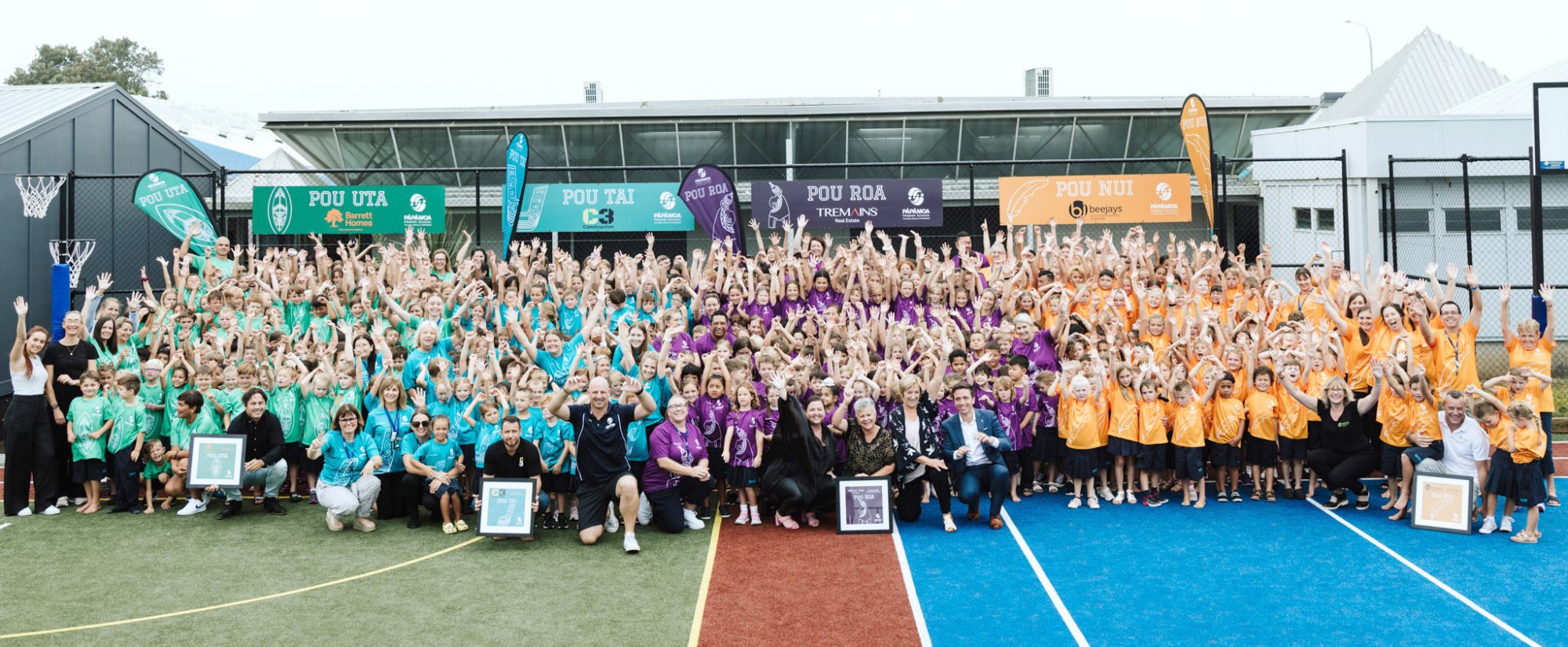
Pou Nui
Kaupapa
The raukura (feather) alludes to the Korowai of Nga PÅtiki, which is a metaphor. A korowai gives protection and each strand is woven into the very fabric of the whenua, tangata and whakapapa.
Korowai was not only practical but was a garment of prestige and whakapapa, which could be related to where the harakeke was gathered, and how Mahi Toi gives a narrative to Te Ao Māori.
The raukura was not included purely for decorative purposes, but makes reference to the Taiao, the elements and tangata.


Pou Roa
Kaupapa
This image is a reference to the mountain range which sits within the lands of Ngā Pōtiki, maunga are Kaitiaki which offers protection to all who live and dwell there.
The interpretation of Kaitiaki is one who protects and lays down the wero, he wears a korowai which links directly to Pou Nui.
Pou Tai
Kaupapa
This image represents the Tauihu or the prow of a waka, the waka accommodates and makes room for all who are on a journey of learning. The Tauihu cuts through the water and ensures the journey is a smooth and fruitful one. Pou Tai ensures that all students can whakapapa to this waka to call their own no matter what their cultural differences are.


Pou Uta
Kaupapa
This image gives a small window into the landscape that is Ngā PÅtiki and the neighbouring whakapapa links to surrounding Hapu-Iwi. The imagery is also representative of both Tupuna Marae Tahuwhakatiki and Tamapahore.
Ko Kopukairoa te Maunga
Ko Waitao te Awa
Ko Mātātua te Waka
Ko Rangataua te Tahuna
The Poutama design represents the steps we take on the journey to learning and rangahau (study)
Mōtītī
Year 5 & 6 Tamariki
Kaitiaki: Karoro (Black Backed Gull)
Purakau: The Karoro feature prominently for mana whenua of Mōtītī with the gull featuring in one of the wharenui on the island.
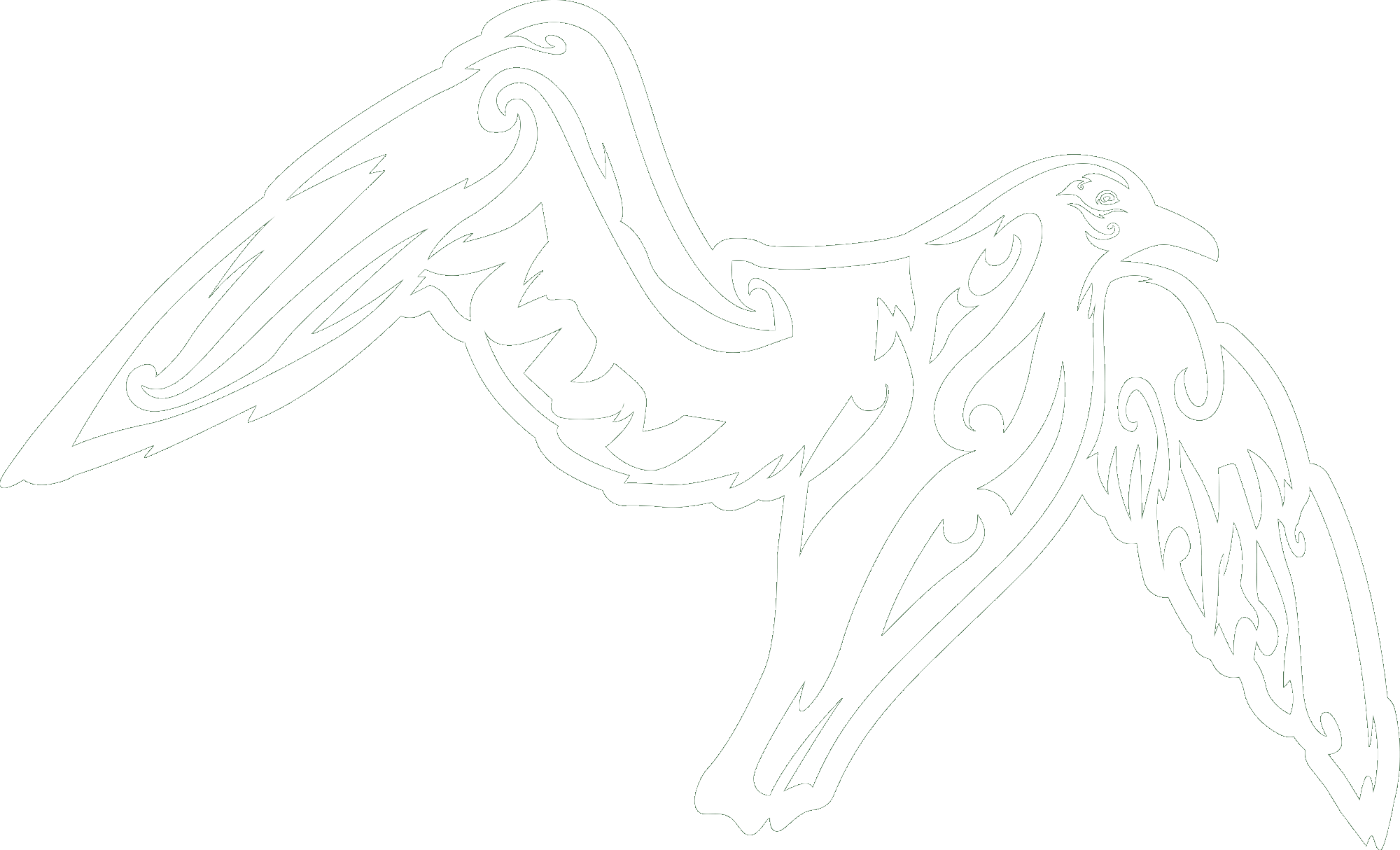
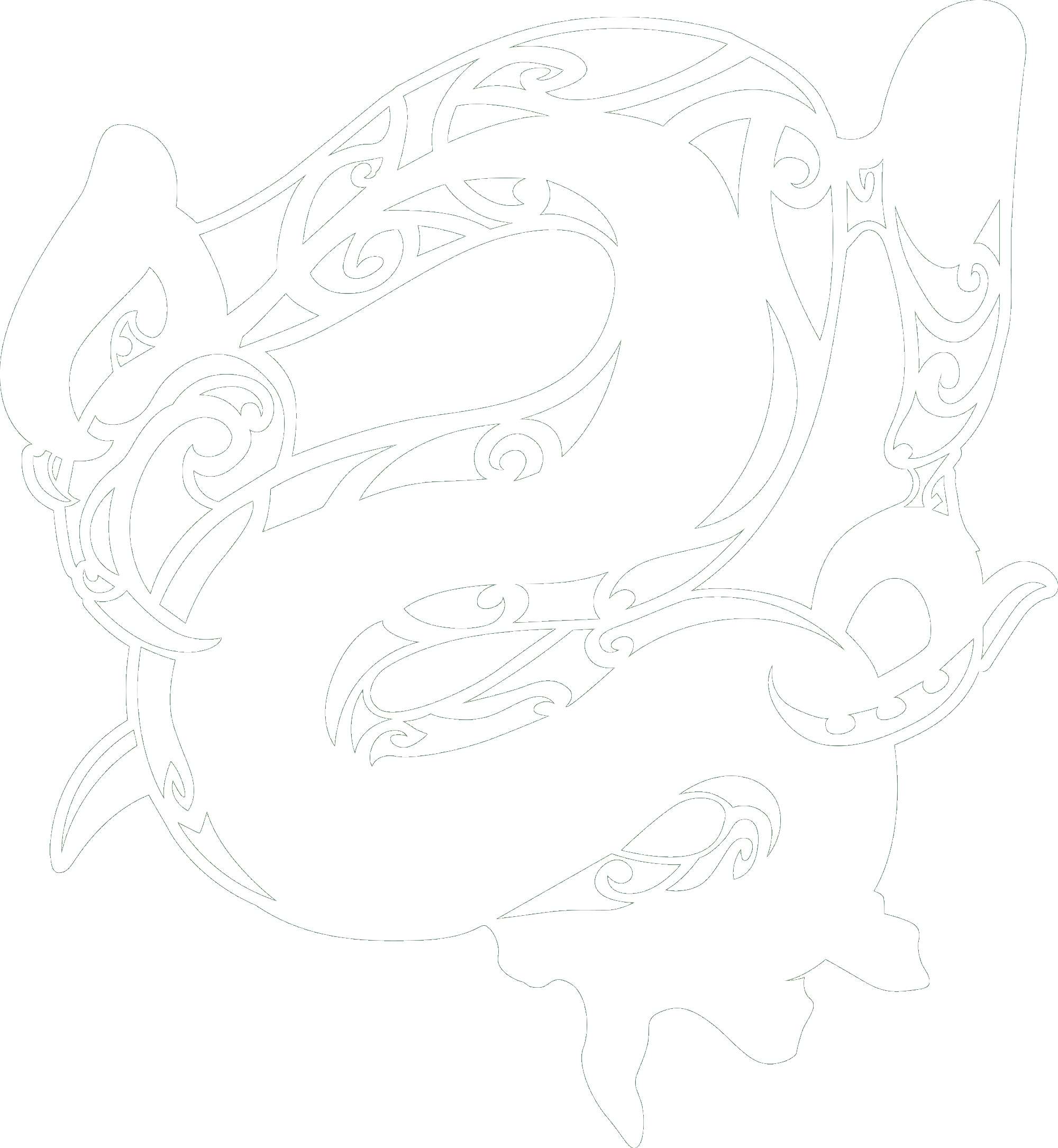
Tūhua
Year 3 & 4 Tamariki
Kaitiaki: Tūhua Taniwha (in Manaia form)
Purakau: Tūhua (there are different versions) in which Tūhua of black obsidian in colour is a kaitiaki and guardian of the island and has protected the island from invasion from others, ie. Pounamu.
Matakana
Year 1 & 2 Tamariki
Kaitiaki: Tohorā
Purakau: Chosen in reference to Matakana being the largest island within the Te Moana a Toi rohe. Tohorā are revered among Māori and seen as children of Tangaroa. They have also been seen as kaitiaki of the moana often acting as guides and guardians when voyaging. Matakana sits at the entrance to the Tauranga Harbour providing shelter to the inner harbour from the elements. Tohorā also feature prominently in Ngā Potiki pūrākau. Matakana also refers to a land mark on the island which acted as a lookout point called Matakana. Sentries who were placed there were strictly instructed to be on the lookout for approaching war parties - they needed to be ‘Matakana’.

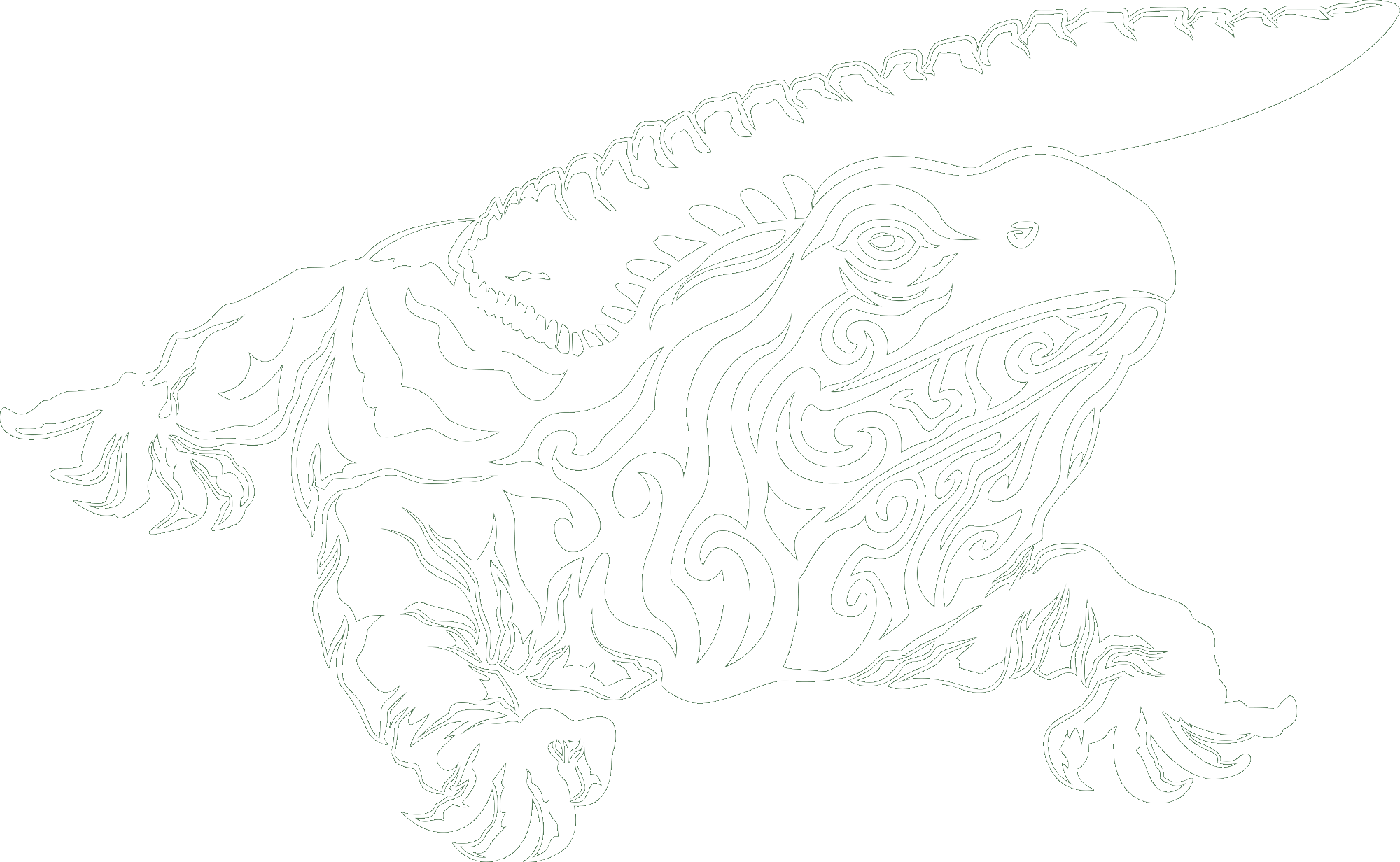
Karewa
New Entrant - Year 1 Tamariki
Kaitiaki: Tuatara
Purakau: Reference to Ngāti Ranginui purakau of Taurikura who turned herself into a lizard, swam to Karewa island and became ancestress of the tuatara that reside on Karewa.
Te Manawanui
Reo Rua / Bilingual Ropu
Kaitiaki: Kōmako / Korimako (Bellbird)
Purakau: The Kōmako has been chosen as kaitiaki for the Te Manawanui team being a native manu with beautiful melody, but specifically because of it’s featuring in a wellknown whakatauki – Unuhia te rito o te harakeke, kei hea te kōmako e kō? If you pull out the centre shoot of the flax plant, where will the Kōmako sing?
The Harakeke plant plays an important part in the history of both the Pāpāmoa region and Pāpāmoa Primary School. The harakeke and the Kōmako serve as a reminder of the past, of the whenua, of manawhenua and the unique connection that Te Manawanui have to these.
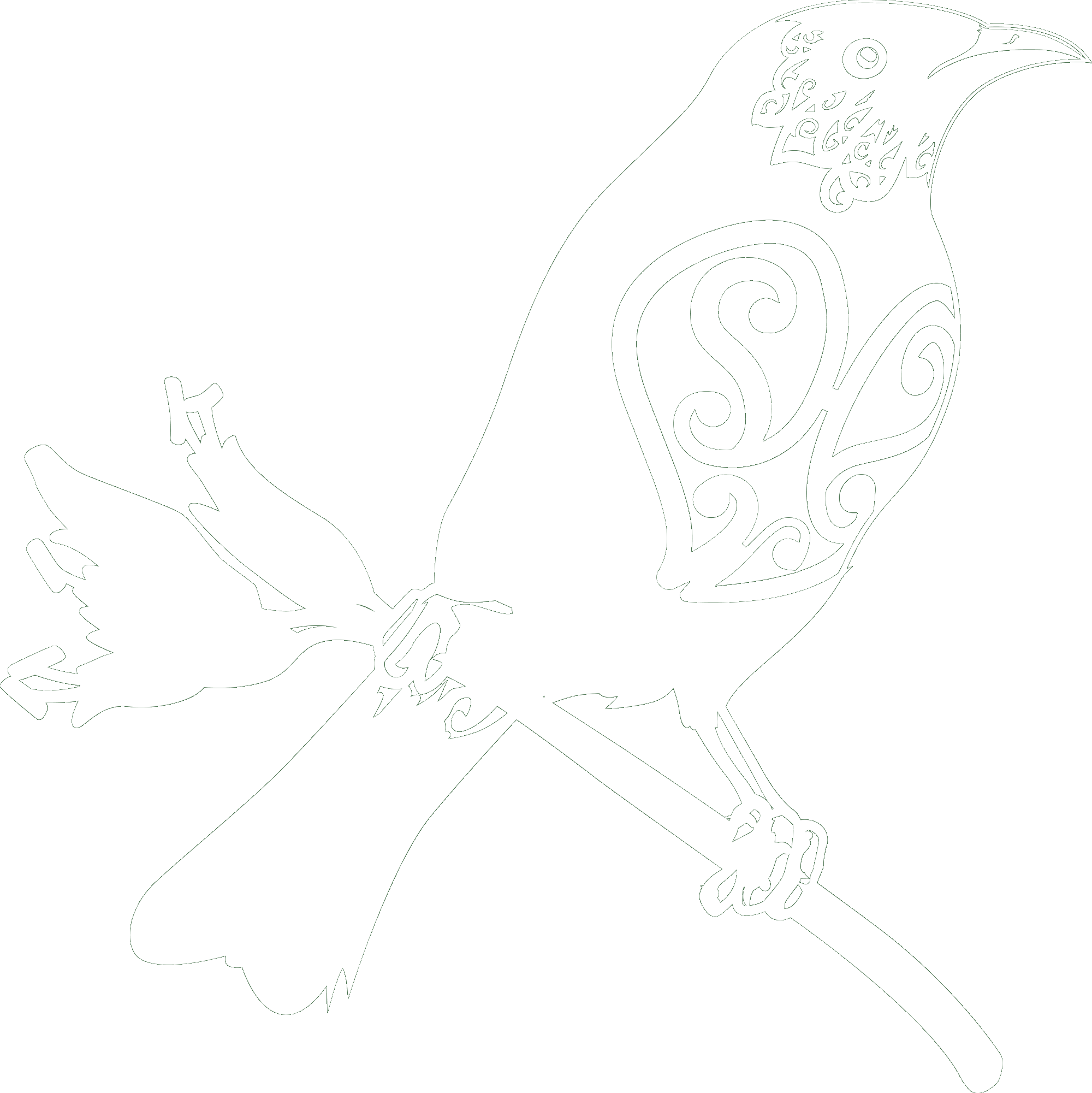
Behaviour Expectations



Connected Expectations



